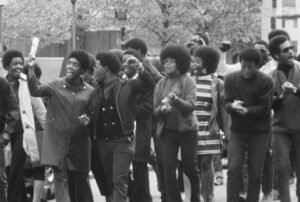September 9, 2015; Inside Higher Ed
In January, President Barack Obama rolled out a new plan to make community college free. Based on labor statistics for unemployment and the median earnings level for associate degrees, it’s not surprising that money is being funneled to this type of education. But while the White House’s recent progress report highlights successes in addressing the barriers to education, how this initiative helps job market shortages is not fully clear.
As we previously reported on this issue, the barriers to higher education are multiple and include cultural, social, and academic obstacles along with financial ones. As the presidential progress report highlights, nonprofits are also playing a role in addressing all of these barriers. For example, the City University of New York runs the Accelerated Study in Associates Program (ASAP), which is funded by city, state and charitable giving. ASAP tackles multiple barriers to graduation, as students are required to get a dedicated adviser and attend seminars on study skills. An MDRC study found that ASAP “was highly cost-effective in terms of graduating students. While it cost more to run ASAP, the increase in the number of students receiving degrees outpaced the additional cost.”
Sign up for our free newsletters
Subscribe to NPQ's newsletters to have our top stories delivered directly to your inbox.
By signing up, you agree to our privacy policy and terms of use, and to receive messages from NPQ and our partners.
Graduation rates are indeed a good metric for student success, but the progress report lacks information on how free college and higher graduation rates will ultimately match student skills to current job demands. As per the Bureau of Labor Statistics, total job openings from growth and replacement needs are 17 percent for bachelor’s degrees and 4.5 percent for associate degrees, both of which lag behind the 34.9 percent for high school equivalent or diploma (or 41 percent when postsecondary non-degree awards are included).
So how will free community college fill the need for non-degree jobs? The progress report doesn’t deal with this issue but rather frames the situation as a need for higher education in general: “Now, more than ever, Americans need more knowledge and skills to meet the demands of a growing global economy without having to take on decades of debt before they even embark on their careers.” The focus on individual debt reduction is laudable; the unanswered question, though, is whether “more skills” are necessarily the “right skills.” And if the country needs to fill jobs that don’t require any kind of degree, the danger is that specific areas, such as the manufacturing sector, will continue to experience labor shortages. According to a 2014 U.S. News article, “Even as the unemployment rate continues to fall, millions of Americans are still without a job, underemployed or stuck with a low-wage job without a career path partly because of this mismatch.”
Individual fulfillment through education is a wonderful goal, but graduation rates are just one metric in the labor-pool-plus-jobs equation. A more robust performance indicator would be whether graduates actually end up finding gratifying work while filling jobs that society needs. Overall though, community colleges are still one of the best crucibles for students—especially those from low-income backgrounds—to hone skills for the job markets that need them.—Amy Butcher













